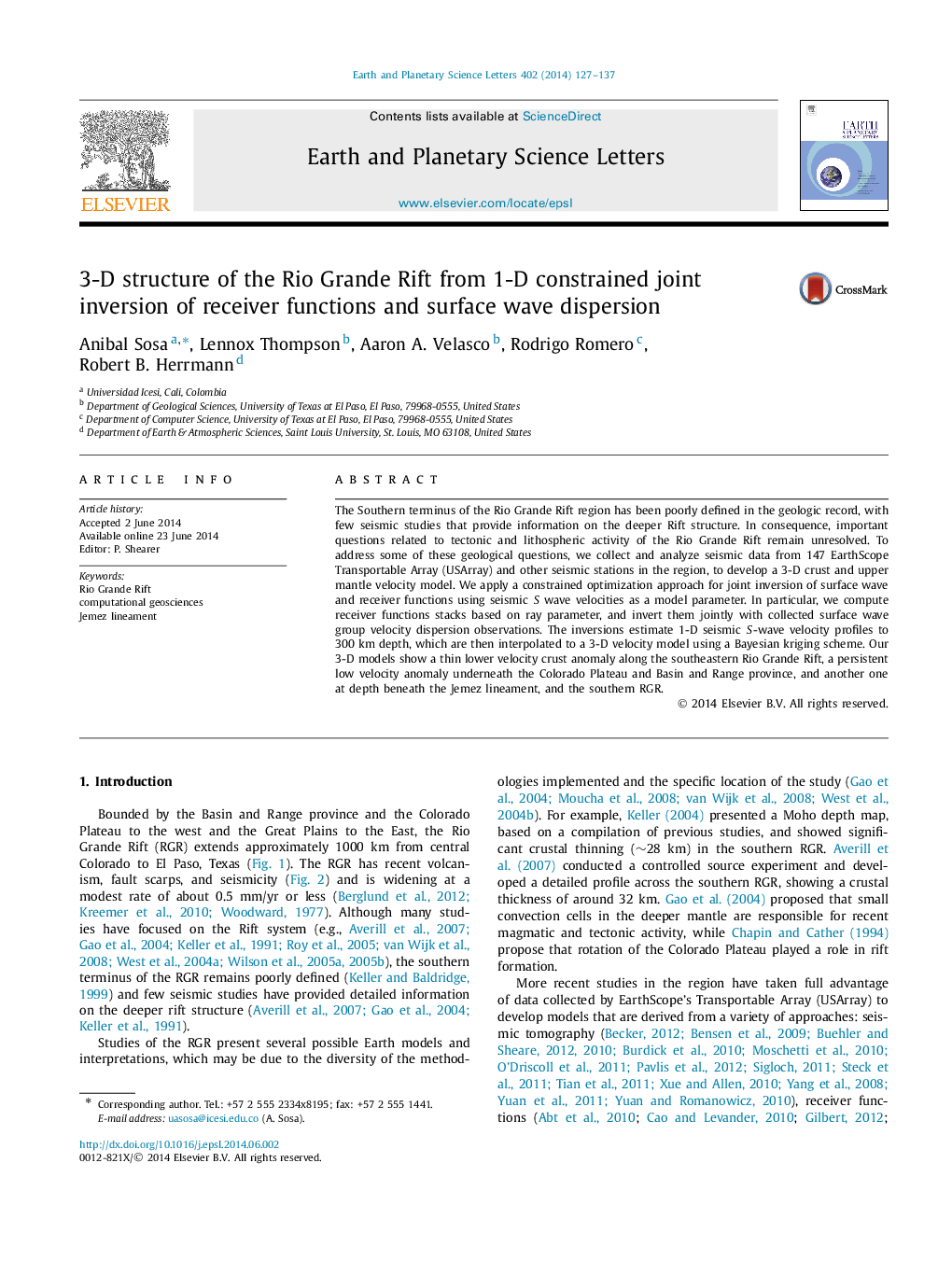| Article ID | Journal | Published Year | Pages | File Type |
|---|---|---|---|---|
| 4677002 | Earth and Planetary Science Letters | 2014 | 11 Pages |
•New model of crustal and upper mantle structure beneath the Rio Grande Rift (RGR).•Novel approach to build a 3-D velocity structure model from 1-D velocity profiles.•Evidence of crustal thinning in the center of the Rift.•No evidence of a deep mantle upwelling driving the RGR.•We identify an upwelling sheet of hot (low velocity) material (Jemez upwelling).
The Southern terminus of the Rio Grande Rift region has been poorly defined in the geologic record, with few seismic studies that provide information on the deeper Rift structure. In consequence, important questions related to tectonic and lithospheric activity of the Rio Grande Rift remain unresolved. To address some of these geological questions, we collect and analyze seismic data from 147 EarthScope Transportable Array (USArray) and other seismic stations in the region, to develop a 3-D crust and upper mantle velocity model. We apply a constrained optimization approach for joint inversion of surface wave and receiver functions using seismic S wave velocities as a model parameter. In particular, we compute receiver functions stacks based on ray parameter, and invert them jointly with collected surface wave group velocity dispersion observations. The inversions estimate 1-D seismic S-wave velocity profiles to 300 km depth, which are then interpolated to a 3-D velocity model using a Bayesian kriging scheme. Our 3-D models show a thin lower velocity crust anomaly along the southeastern Rio Grande Rift, a persistent low velocity anomaly underneath the Colorado Plateau and Basin and Range province, and another one at depth beneath the Jemez lineament, and the southern RGR.
